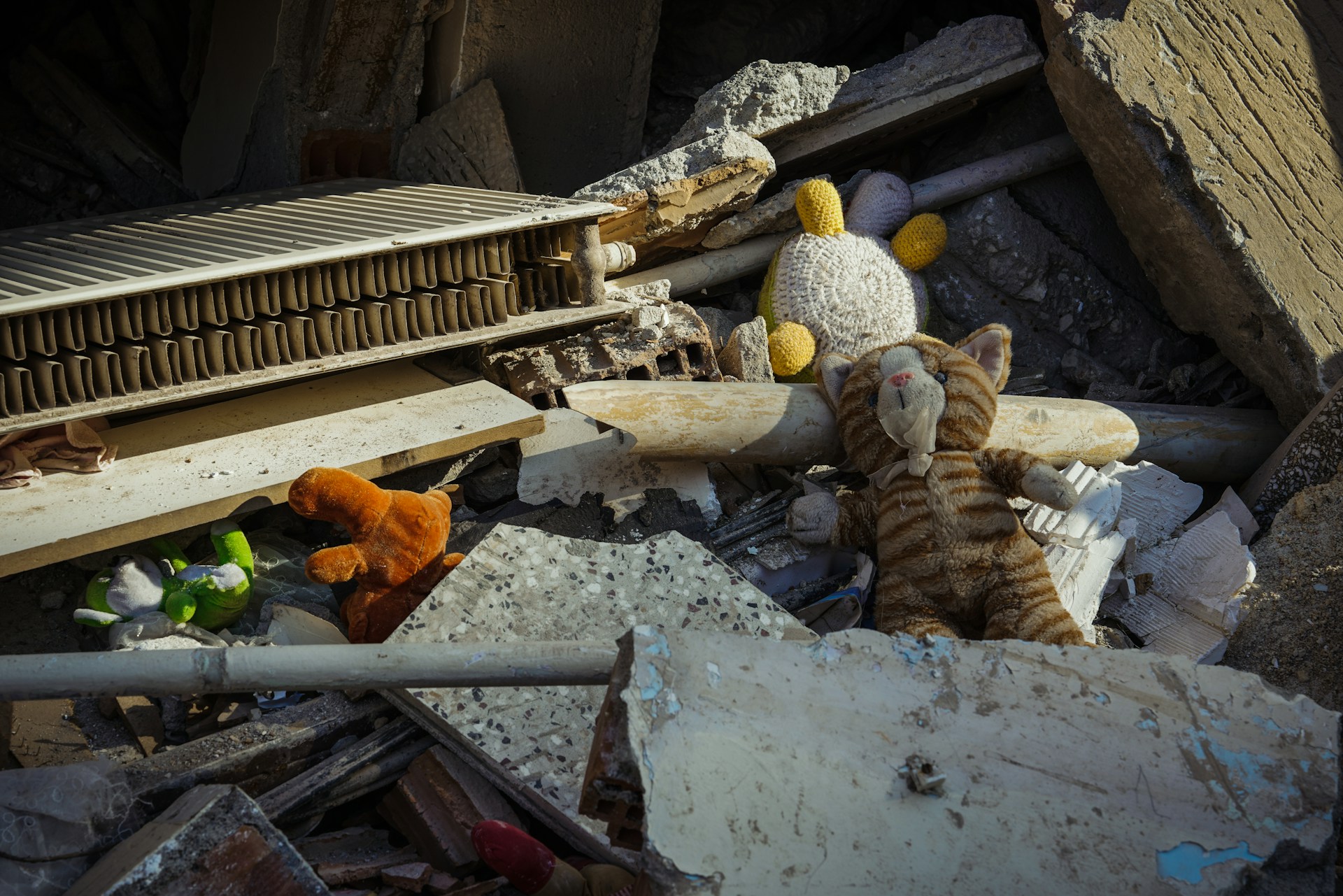Preparedness
Homeowner Defends Property: Intruder Shot in Face

A Pennsylvania homeowner found himself in a life-threatening situation over the weekend when a burglary suspect reportedly refused to leave his property.
According to Pennsylvania State Police, they responded to a call on Mae West Road in Henry Clay Township around 11:30 p.m. on Saturday regarding a burglary in progress.
The suspect, identified as 62-year-old David Luczak of Cleveland, wandered through multiple rooms before eventually stepping outside, as reported by Fayette County District Attorney Mike Aubele.
The homeowner, armed with a gun, confronted Luczak in the driveway. Despite being confronted, Luczak attempted to re-enter the home.
“Thank God the homeowner was armed; this could have been a lot worse,” Aubele said, emphasizing the gravity of the situation.
The homeowner fired multiple shots, striking Luczak twice in the face. Part of this intense encounter was captured on a doorbell camera.
Aubele confirmed on Monday that the homeowner acted within his rights and would not face any charges.
“I don’t see any reason why we’d be charging him. He acted well within his rights,” he stated.
Police provided immediate medical attention to Luczak until EMS arrived. He was then flown to a hospital, where he was listed in stable condition.
“He’s very lucky. He’s very lucky to have survived. Again, it’s by the grace of God he’s still here,” Aubele remarked.
Officials are investigating the possibility of a mental health issue involving Luczak. Conflicting information has been received from his family.
In 2013, Luczak was charged with murder in a homicide case, though it remains unclear if he was convicted.
Luczak did not take anything from the home during the incident, and it is still being determined if he had a weapon. He will face charges of burglary and criminal trespass.
“Everyone deserves to feel safe in their home and take appropriate action to protect their house, protecting their castle,” Aubele reiterated, highlighting the importance of self-defense in such scenarios.
This incident underscores the critical need for homeowners to be prepared to defend their property and loved ones.
Watch a local news report about the incident below:
Let us know what you think, please share your thoughts in the comments below.

Preparedness
Unlock Homesteading Secrets for Tiny Spaces and Ultimate Self-Reliance

If you’ve ever thought that homesteading is out of reach due to limited space, it’s time to rethink that notion. With a bit of ingenuity, you can adopt the homesteading lifestyle even in the smallest of areas. Whether you’re working with a modest backyard, a balcony, or just a windowsill, transforming your space into a hub of sustainable living is entirely feasible.
One crucial strategy for small-space gardening is to “think vertically.” Vertical gardening maximizes available space by making use of walls, fences, and trellises. Consider investing in or crafting your own hanging or vertical planters from repurposed materials. This approach enables you to cultivate a diverse array of herbs, vegetables, and even fruits within your limited area.
For those with a balcony, porch, or windowsill, container gardening offers a versatile solution. Select pots of varying sizes and materials, ensuring they have adequate drainage. A lightweight potting mix is ideal, and self-watering containers can add convenience to your gardening efforts.
Starting your homestead with herbs is both easy and rewarding. Herbs like basil, mint, rosemary, thyme, and parsley are compact and thrive in small spaces. “Snip some fresh herbs whenever you need them, and savor the taste of homegrown goodness.”
Collecting rainwater doesn’t require a vast expanse. Install rain barrels or small water tanks to gather rainwater from your roof or balcony. This practice not only nourishes your plants but also diminishes your dependence on municipal water supplies.
Composting is a fundamental practice for any homesteader, regardless of space limitations. Kitchen scraps, yard waste, and even some paper products can be composted. Explore methods such as worm composting or bokashi composting, which are well-suited for small spaces. This not only reduces waste but also generates nutrient-rich soil for your plants.
Repurposing and upcycling are at the heart of the homesteading spirit, and space constraints are no barrier. Transform old pallets into raised beds, start seeds in mason jars, or turn old furniture into planters. The possibilities are endless, allowing you to save money while adding a personal touch to your homestead.
Self-sufficiency is a core aspect of homesteading, and it isn’t limited by the size of your space. Learning essential survival skills, like building a fire or purifying water, is invaluable. Engage in survival classes, join local garden clubs, and connect with local farmers. “The key is to get started and prepare now for unforeseen disasters.”
Let us know what you think, please share your thoughts in the comments below.
Preparedness
Master Wildfire Defense with These Essential Home Protection Tips

Understanding the unpredictable nature of wildfires is crucial for homeowners looking to protect their properties. The primary culprits for home ignitions during these events are embers and small flames. Embers, which are burning fragments of wood or vegetation, can be carried by the wind for over a mile, igniting homes and other structures in their path.
To effectively shield your home from the threat of wildfires, it’s essential to focus on two main factors: the quality of the defensible space around your home and the structural ignitability of the building itself. These elements together form what is known as the Home Ignition Zone (HIZ), which encompasses both the structure and the immediate surroundings.
The goal is to minimize or eliminate fuels and ignition sources within this zone. Defensible space is a crucial element in this strategy, involving the modification of the area around a home to reduce fire hazards. By treating or removing natural and manmade fuels, you can slow the spread of a wildfire and reduce the risk of it reaching your home.
Creating an effective defensible space requires dividing your property into management zones, each with specific treatment techniques. This approach should be applied to all structures on your property, including garages and storage buildings. The design of these zones will depend on factors such as the types and sizes of vegetation on your property.
The first zone to address is the area from the home to five feet out. This non-combustible area is the most vulnerable to embers, making it crucial to start here. Begin by cleaning roofs and gutters of debris and repairing any loose shingles or tiles to prevent ember penetration.
“Replace or repair any loose or missing shingles or roof tiles to prevent ember penetration.”
Additionally, install 1/8 inch metal mesh screening on vents to reduce ember intrusion. Remove flammable materials from wall exteriors and underneath decks or porches.
The next zone extends from five to thirty feet from the home. Here, careful landscaping and hardscaping can influence and decrease fire behavior. Keep lawns and native grasses mowed to a height of four inches and remove ladder fuels to prevent surface fires from reaching tree crowns. Trees should be spaced with a minimum of eighteen feet between crowns, increasing with slope.
Finally, the zone from thirty to one hundred feet, extending to two hundred feet, focuses on interrupting the fire’s path and keeping flames smaller and on the ground. Remove vegetation near outbuildings and ensure adequate spacing between tree canopies.
In areas with high fire danger that are difficult to access, consider using goats for vegetation management. Goats are natural browsers and can effectively prune brush and low tree branches to recommended heights. They also target non-native species that increase wildfire frequency due to their flammability.
“If you throw a bunch of matches into a forest, some small percentage of them might actually start a fire,” explains Bethany Bradley, a professor of environmental conservation at UMass Amherst. “But if you throw a bunch of matches into a big hay pile, there’s a good chance that many of those will catch fire.”
For those planning to build or renovate homes, exploring the latest fire-resistant materials for roofing and siding is advisable. A simple metal roof without dormers can shed embers effectively, reducing the risk of ignition. Regularly consult with local fire professionals for evaluations and updates on fire-resistant technologies to enhance your property’s protection against wildfires.
Let us know what you think, please share your thoughts in the comments below.
Preparedness
Debunking Earthquake Myths: What You Really Need to Know

Throughout history, people have concocted a variety of imaginative explanations for earthquakes, from mythical creatures to divine interventions. While modern geology has debunked these ancient ideas, several misconceptions about earthquakes continue to persist today. These myths can be just as misleading and potentially dangerous when it comes to preparing for these powerful natural events.
One prevalent myth is the notion that earthquakes can cause the ground to open up and swallow people, cars, and buildings whole. However, experts largely dismiss this idea. The United States Geological Survey (USGS) explains that “shallow crevasses can form during earthquake-induced landslides, lateral spreads, or from other types of ground failures, but faults do not open up during an earthquake.” Earthquakes occur when two blocks of the earth’s crust slide past one another, held together by friction. If a fault were to open, the friction would be lost, and no earthquake would occur.
Recent research from Caltech University, published in the journal Nature, suggests that “thrust faults” can create gaps in the earth’s surface up to 160 feet wide before snapping shut. However, these phenomena have been observed only in oceanic settings, and there are no recorded incidents of such crevasses swallowing people or buildings. Therefore, this scenario should not be a primary concern in earthquake preparedness.
Another common misconception is the belief that doorways provide the safest refuge during an earthquake. This advice stems from historical examples of old adobe homes in California, where doorframes remained standing amid the rubble. However, as the University of Washington Department of Emergency Management notes, “In modern houses, the doorways are no stronger than any other part of the house, and the doorway does not protect you from the most likely source of injury – falling or flying objects…you are safer under a table.”
Living in urban or suburban areas often gives a false sense of security regarding disaster preparedness. It’s easy to assume that essential resources will remain accessible, but a major earthquake can disrupt even the most basic services. Severed roads, power, and water lines can isolate communities, making it difficult to obtain necessities. This is why organizations like FEMA now recommend preparing a two-week emergency kit instead of the traditional 72-hour one. For optimal preparedness, it’s wise to have at least three months’ worth of food, water, and gear.
Finally, there’s a misconception about the reliability of insurance in the aftermath of natural disasters. Insurance companies operate as businesses, not charities, and their main priority is their financial stability. Katherine R. H. Wagner from the Stanford Institute for Economic Policy Research points out that “a single natural disaster could bankrupt insurance companies,” leading some to hesitate in offering natural disaster coverage.
In conclusion, it’s crucial to dispel these myths and rely on accurate information when preparing for earthquakes. Understanding the realities of these natural events can help ensure better safety and preparedness for everyone involved.
Let us know what you think, please share your thoughts in the comments below.
-

 Tactical1 year ago
Tactical1 year ago70-Year-Old Fends Off Intruder with Lead-Powered Message
-

 Tactical1 year ago
Tactical1 year agoVape Shop Employee Confronts Armed Crooks, Sends Them Running
-

 Preparedness11 months ago
Preparedness11 months agoEx-Ballerina’s Guilty Verdict Sends Tremors Through Gun-Owner Community
-

 Preparedness10 months ago
Preparedness10 months agoGood Samaritan Saves Trooper in Harrowing Interstate Confrontation
-

 Tactical1 year ago
Tactical1 year agoMidnight SUV Theft Interrupted by Armed Homeowner’s Retaliation
-

 Survival Stories2 years ago
Survival Stories2 years agoEmily’s 30-Day Experience of Being Stranded on a Desert Island
-

 Preparedness10 months ago
Preparedness10 months agoArizona Engineer’s Headless Body Found in Desert: Friend Charged
-

 Preparedness10 months ago
Preparedness10 months agoBoy Saves Dad from Bear Attack with One Perfect Shot
Gerald Fontenot
August 29, 2024 at 11:39 am
The 2nd amendment is there for a reason, put there by smart people, not ‘woke’ or liberal people.
Joan
August 29, 2024 at 12:56 pm
How can it remain unclear if he was convicted in 2013. Is the paperwork in Pennsylvania that bad. It sounds like he was released but they don’t want to let the media know.
V
August 29, 2024 at 3:15 pm
This has NOTHING to do with liberals you partisan fuqcnughet
Timothy
August 30, 2024 at 11:39 pm
what caliber was the gun that was used? Must have been small. Two shots to the face? still alive?